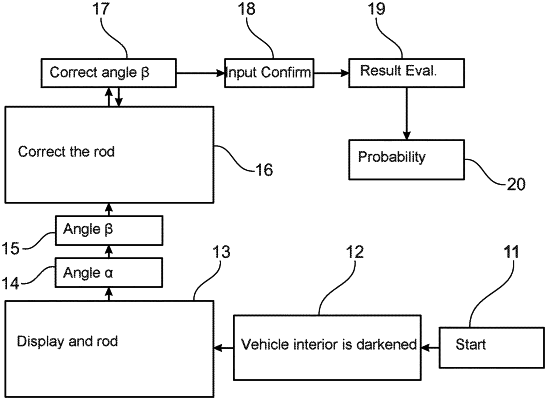| CPC A61M 21/02 (2013.01) [B60K 35/00 (2013.01); G06F 3/011 (2013.01); A61M 2021/005 (2013.01); A61M 2230/63 (2013.01); B60K 2370/1529 (2019.05); B60K 2370/744 (2019.05)] | 10 Claims |

|
1. A method for detecting a tendency of a passenger of a vehicle (25) to get motion sickness using a rod and frame test, the method comprising:
displaying, on a display (1) in an interior of the vehicle (25), an image designed to carry out the rod and frame test, which comprises at least one frame (2) and a rod (3) arranged in the frame (2), wherein the rod (3) and the frame (2) each enclose an angle (α, β) greater than 0 degrees and less than 90 degrees with a horizontal spatial axis (5) and/or a vertical spatial axis (4),
issuing a request to correct the rod (3) into a vertical or horizontal position by an input device (22),
recording an input carried out by the passenger (18) for the correction of the rod (3),
evaluating the rod and frame test by an evaluation device (23) based on the input of the passenger, and
outputting, based on evaluating the rod and frame test, at least one measure to prevent and/or combat the occurrence of motion sickness.
|